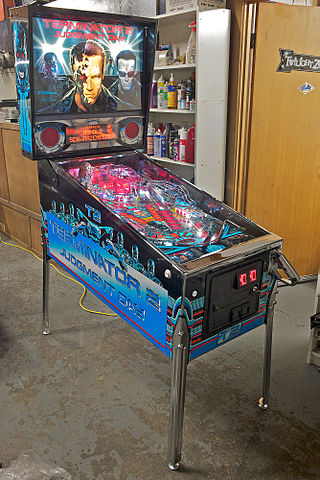
Pinball games are a family of games in which a ball is propelled into a specially designed table where it bounces off various obstacles, scoring points either en route or when it comes to rest. Historically the board was studded with nails called 'pins' and had hollows or pockets which scored points if the ball came to rest in them. Today, pinball is most commonly an arcade game in which the ball is fired into a specially designed cabinet known as a pinball machine, hitting various lights, bumpers, ramps, and other targets depending on its design. The game's object is generally to score as many points as possible by hitting these targets and making various shots with flippers before the ball is lost. Most pinball machines use one ball per turn, and the game ends when the ball(s) from the last turn are lost. The biggest pinball machine manufacturers historically include Bally Manufacturing, Gottlieb, Williams Electronics and Stern Pinball.
A glossary of terms, commonly used in discussing pinball machines.
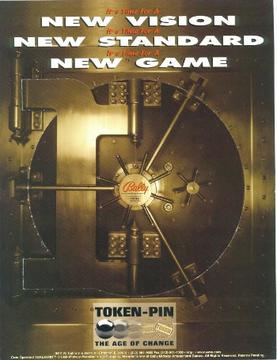
Safe Cracker is a pinball machine with a safecracking theme, designed by Pat Lawlor, and distributed by Midway. It was created in 1996. About 1148 were manufactured.
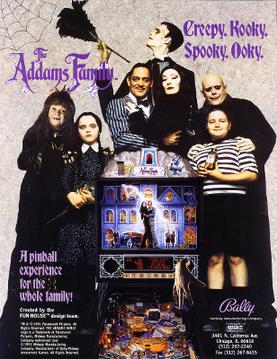
The Addams Family is a pinball machine released in March 1992. It was designed by Pat Lawlor and Larry DeMar and released by Midway. It was based on the 1991 film of the same name, and features custom speech by the stars of the film, Anjelica Huston and Raul Julia. It is the best-selling solid state pinball machine of all time with 20,270 units sold.
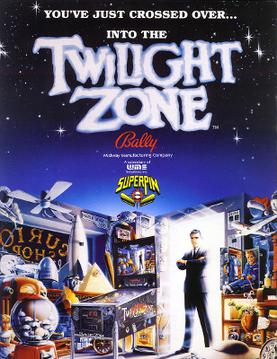
Twilight Zone is a widebody pinball machine, designed by Pat Lawlor and based on the TV series of the same name. It was first released in 1993 by Midway. This game is part of WMS' SuperPin line of widebody games alongside Star Trek: The Next Generation and Indiana Jones: The Pinball Adventure.

Cirqus Voltaire is a 1997 pinball game, designed by John Popadiuk and released by Williams Electronics Games. The theme involves the player performing many different marvels in order to join the circus. Some of the game's distinctive features include a neon light running along the right-hand ramp, a pop bumper that rises up from the middle of the playfield at certain times, and a magnet at the top of the left ramp that can catch balls and divert them into the locks. The most notable feature is the Ringmaster, a head that rises at certain times and taunts the player.

Attack from Mars is a 1995 pinball game designed by Brian Eddy, and released by Midway.

Black Rose is a pinball machine designed by John Trudeau and Brian Eddy and produced by Midway. The game features a pirate theme and was advertised with the slogan "This game is loaded!".Bally abandoned the idea to use black pinballs for the machine.

Fish Tales is a fishing-themed pinball game released by Williams in 1992. It is one of the top 20 most produced pinball machines of all time, selling more than 13,000 units.
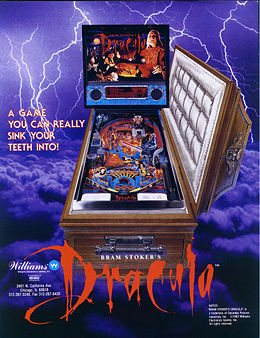
Bram Stoker's Dracula is a 1993 pinball machine released by Williams. It is based on the 1992 film of the same name.
Doctor Who is a pinball machine designed by Bill Pfutzenreuter (Pfutz) and Barry Oursler, and released by Midway in September 1992. It is based on the television series Doctor Who. As stated in the Gameplay section, the rulesheet is rather different from other pinball machines released at the time, which didn't help popularity as casual players did not understand the complex rule changes that occur during the game.

Checkpoint is a 1991 pinball machine released by Data East. It featured the first dot matrix display (DMD) ever incorporated into a pinball game. For Checkpoint, Data East used a "half-height" DMD. By way of comparison, Williams later produced machines with standard DMDs that were twice the height. Checkpoint also features video mode minigames on its display.

Star Wars Episode I is a 1999 pinball game designed by John Popadiuk and released by Williams and the second machine to use the Pinball 2000 hardware platform. It is based in the Star Wars film The Phantom Menace.
Theatre of Magic is a pinball machine designed by John Popadiuk, produced by Midway.
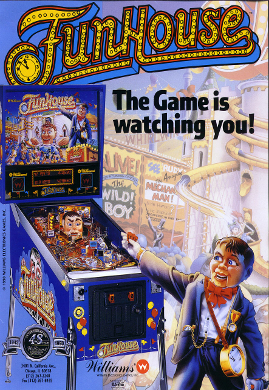
FunHouse is a pinball machine designed by Pat Lawlor and released in November 1990 by Williams Electronics. Starring a talking ventriloquist dummy named Rudy, the game is themed after the concept of an amusement park funhouse. FunHouse is one of the last Williams games to use an alphanumeric display; the company switched to dot matrix the following year.

The Party Zone is a crossover solid-state pinball machine released in 1991 by Midway designed by Dennis Nordman and programmed by Jim Strompolis. It is in a single playfield format and collaborates characters from previous pinball machines. It is the second pinball machine released after the Bally-Midway division was sold, yet still operated under the "Bally" name.

Judge Dredd is a four-player pinball game produced by Bally Manufacturing in 1993, based on the British comic strip Judge Dredd in 2000 AD. Nearly 7,000 were made.

Harley-Davidson is a Sega Pinball pinball machine released in September 1999 and was the last machine released by this company. It was designed by Jon Borg and Lonnie D. Ropp.

The Champion Pub is a pinball game released by Williams Electronics Games in 1998. The theme of the game revolves around boxing in a 1920s pub.

Flight 2000 is a 1980 Stern widebody pinball machine. It was the first table by this company with speech. The theme of the game revolves around futuristic space flight.

















